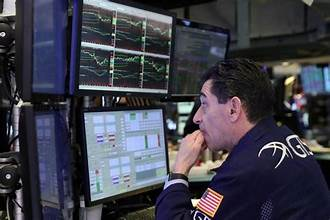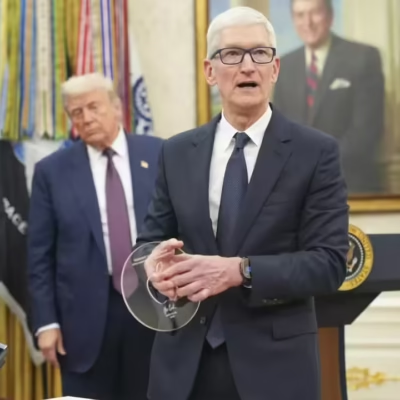After a significant rally fueled by optimism surrounding a temporary U.S.–China trade deal, U.S. stock futures are now trending downward. Investors are taking a cautious approach after a period of intense market enthusiasm, triggered by positive news regarding the U.S.–China trade talks. The decline in futures signals uncertainty in the financial markets as investors shift their focus to potential risks ahead.
U.S.–China Trade Deal Euphoria Fades
Earlier in the week, stock markets surged following news that the U.S. and China had agreed to a temporary trade deal aimed at reducing tensions between the two economic giants. This deal, which offered a brief respite from the ongoing trade war, was welcomed by markets that had been under pressure for months. However, as the deal’s long-term effectiveness and impact remain unclear, market optimism is beginning to fade.

While the initial news of the trade agreement led to a rally in major stock indices, concerns are now resurfacing about the sustainability of this agreement. Analysts and investors are questioning whether the temporary deal will lead to meaningful, lasting progress in the trade dispute or if it will merely delay a more significant resolution.
What Does the Decline in Stock Futures Mean?
Stock futures are contracts that indicate where investors believe the market will open the next day. A decline in stock futures suggests that investors are now expecting lower market performance, at least in the short term. This trend is often seen after a period of strong market growth, especially when fueled by external factors like trade deals, which can be subject to change.
The drop in futures following the rally indicates a shift in investor sentiment. While many are still hopeful that the trade deal will offer some stability, others are cautious about the broader economic picture. Factors such as inflation concerns, rising interest rates, and ongoing geopolitical tensions are weighing heavily on investor confidence.
Factors Contributing to the Decline
Several key factors are contributing to the decline in stock market futures:
- Uncertainty Surrounding the U.S.–China Trade Deal: Although the temporary trade deal provided a brief boost to market sentiment, doubts about its long-term effectiveness are now causing some investors to rethink their positions. The absence of clear, long-term commitments in the deal has raised concerns about its sustainability.
- Interest Rate Increases: The Federal Reserve’s actions to increase interest rates in recent months have been a point of concern for investors. Higher interest rates can lead to higher borrowing costs for businesses and consumers, which could slow economic growth and hurt corporate profits.
- Geopolitical Tensions: Alongside the U.S.–China trade dispute, ongoing geopolitical tensions in regions such as the Middle East, Europe, and North Korea continue to create an air of uncertainty. Investors are wary of potential disruptions in global markets, which could lead to sudden declines in stock prices.
- Corporate Earnings Pressure: Companies across various sectors are facing pressure to meet earnings expectations. The combination of rising costs, supply chain disruptions, and slower consumer spending could negatively impact profits in the upcoming earnings season, further dampening investor optimism.
Market Sentiment and Investor Reactions
Investor sentiment is currently a mix of caution and uncertainty. Following the rally, some investors are opting to lock in profits and reduce their exposure to riskier assets. Others are waiting to see how the situation evolves, especially regarding the trade deal and the broader economic conditions.

However, some investors remain hopeful that the U.S.–China deal could provide a foundation for future growth, especially if it leads to deeper cooperation and stability in international trade. The positive effects of this deal might take time to materialize, and as a result, many investors are taking a wait-and-see approach.
What’s Next for the Stock Market?
As we move into the coming weeks, the outlook for the stock market remains uncertain. While some analysts believe that the market could recover once the effects of the trade deal begin to show, others warn that the risks of an economic slowdown are still present. Investors will need to remain vigilant and prepared for potential volatility as the situation unfolds.
In the short term, stock market futures may continue to fluctuate as investors react to new developments in the trade deal, interest rate hikes, and other global economic factors. It’s essential for investors to stay informed and adjust their portfolios to manage risk.
Conclusion: Navigating the Volatile Market
The decline in U.S. stock futures following a temporary U.S.–China trade deal serves as a reminder of the volatility and uncertainty that often accompanies major market events. While the initial optimism was driven by hopes of a trade resolution, the future remains uncertain, and investors must be prepared for further fluctuations. With various economic factors at play, it is crucial for investors to stay informed and be ready to adapt as the market continues to evolve.
For further details, visit our market analysis page and stay updated on the latest trends.
Also Read – US Exits WHO: Health Future at Risk?






